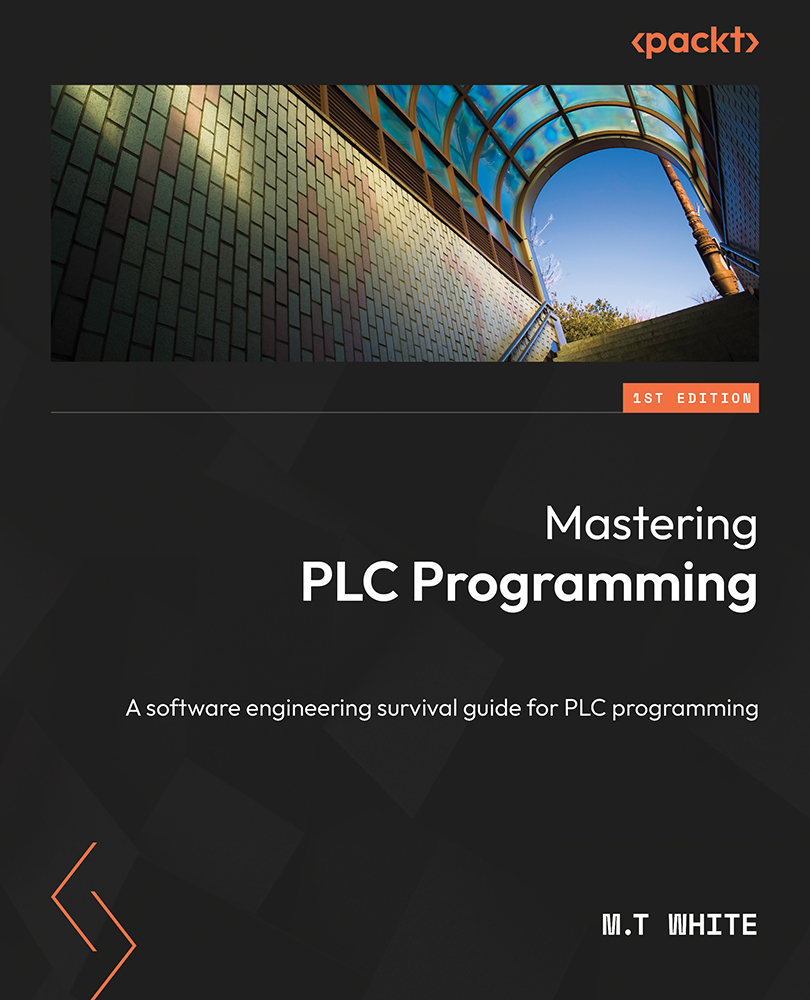Summary
As a PLC programmer, it is of absolute importance that you understand the IEC 61131-3 standard. It is also of absolute importance that PLC software is not treated as a throwaway component. The heart and soul of any PLC-based system is the software. Great diligence must be given to the software when it is first being developed. As we have seen, many languages can be used to develop a PLC program. However, for complex software, such as the software that will be explored in this book, Structured Text will be the primary language used. As such, the following chapter will be dedicated to the more advanced concept of Structured Text language.
At this point, you should have CODESYS installed and working. If everything went according to plan, you should be able to run the Hello, World! program that was explored previously. The program that was presented is by no means a significant program and its only real purpose is to test the CODESYS installation and get you familiar with logging into and running a program in the CODESYS environment. In all, the main takeaway for this chapter should be that a well-engineered PLC program will ultimately save time and money in the long run, as it will be flexible and stable enough to support any changes that may arise in the project.



























































